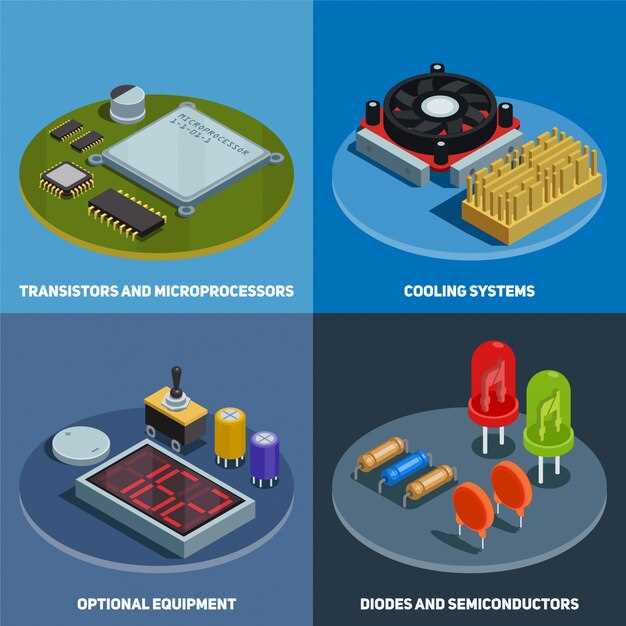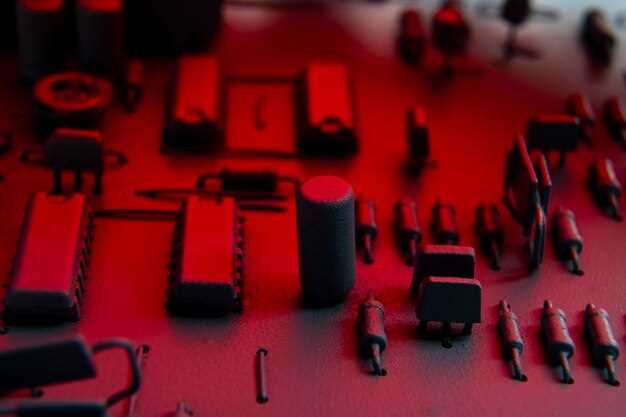
The R1 build represents a significant evolution in the realm of custom electronics development, paving the way for innovative integration techniques that enhance functionality and performance. As technology continues to advance, the necessity for tailored solutions in electronics grows, requiring developers to adopt versatile methods for seamless integration. This article delves into the intricacies of custom electronics integration, focusing on methodologies that are essential for achieving a robust R1 build.
Effective integration techniques not only bolster the performance of electronic systems but also streamline the development process. In an era where efficiency and precision are paramount, understanding how to leverage custom components, sensors, and communication protocols becomes crucial. This discussion will explore the best practices and tools that can be employed to ensure a cohesive and effective assembly of electronic elements in the R1 build.
Moreover, we will examine various challenges that engineers may encounter during the integration process, providing insights into potential solutions and innovative approaches. By harnessing the power of cutting-edge technologies and integrating them strategically, developers can maximize the potential of their R1 projects, ultimately setting new standards in custom electronics design.
Comparative Analysis of PCB Design Software for R1 Build Projects

When embarking on R1 build projects, selecting the appropriate PCB design software is crucial for efficiency and effectiveness. The two most prominent software solutions in the market are Altium Designer and Eagle PCB. Each of these tools has unique strengths and weaknesses that can significantly impact the design and development process.
Altium Designer is renowned for its advanced capabilities in PCB design, with an intuitive user interface and powerful features such as real-time 3D visualization. Its integrated environment allows for seamless collaboration among team members, which is particularly beneficial for complex projects that require multiple stakeholders. Altium supports advanced routing techniques and provides extensive libraries, which can accelerate the prototyping phase. However, the pricing can be a barrier for small teams or individual developers.
In contrast, Eagle PCB is widely recognized for its low-cost licensing model, making it accessible for hobbyists and startups. It offers essential features like schematic capture, PCB layout, and routing capabilities, which are sufficient for many R1 build projects. Eagle’s modular nature and support for various plugins enable users to customize their experience. However, its interface may not be as intuitive as Altium’s, and users might encounter limitations when handling very large boards or complex designs.
An additional option is KiCAD, an open-source software that has increasingly gained traction due to its no-cost usage and active developer community. KiCAD provides a robust set of tools, including 3D modeling and a large library of components. While its ease of use has improved over the years, it may lack some of the advanced features found in commercial products, resulting in a steeper learning curve for new users.
Fusion 360 for PCB design is another noteworthy competitor, as it integrates mechanical and electronic design workflows. This software is particularly beneficial for projects requiring tight coordination between circuit design and mechanical enclosures. The collaborative features in Fusion 360 can streamline the design process but might require a subscription for full access.
In summation, the choice of PCB design software for R1 build projects depends on factors such as budget, project complexity, and team collaboration needs. Altium Designer excels in complex, high-end designs, while Eagle PCB offers a cost-effective solution for simpler projects. KiCAD stands out for those looking for an open-source alternative, and Fusion 360 is advantageous for integrated designs. Analyzing these factors will help teams select the most appropriate tool for their specific requirements.
Implementing IoT Protocols for Seamless Device Communication
In the realm of custom electronics integration, the implementation of Internet of Things (IoT) protocols is critical for ensuring efficient and seamless communication between devices. These protocols serve as the backbone for data exchange, allowing devices to interconnect, share information, and respond to each other in real-time.
The widely adopted IoT protocols include MQTT (Message Queuing Telemetry Transport), CoAP (Constrained Application Protocol), and HTTP/HTTPS. Each has distinct features suited for various applications. For instance, MQTT excels in scenarios requiring low-latency and minimization of network bandwidth, making it ideal for constrained devices with limited processing power. Its publish-subscribe model enables efficient message distribution across the network.
CoAP, designed for simple devices and services, provides a lightweight framework for RESTful communication. It operates effectively over UDP, benefiting resource-constrained environments. The ability to interact with RESTful APIs allows integration with web services, enhancing connectivity.
On the other hand, HTTP/HTTPS is more suitable for scenarios where security and reliability are paramount. The ubiquitous nature of these protocols facilitates easier integration with existing web infrastructures. When implementing HTTP-based communication, developers must consider the overhead associated with request-response cycles, especially in low-power devices.
Security is a paramount concern in IoT implementations. Employing protocols that support encryption, such as TLS for MQTT and HTTPS for HTTP communications, is essential to protect data integrity and user privacy. Additionally, incorporating standard authentication mechanisms, such as OAuth, can further enhance security by ensuring that only authorized devices can communicate within the network.
Seamless device communication also relies on the effective handling of data formats. The common data serialization formats like JSON and XML should be utilized to ensure compatibility across different systems. The choice between these formats often depends on the specific requirements of the application, considering factors like parsing efficiency and bandwidth consumption.
Finally, the successful integration of IoT protocols requires thorough testing and optimization. Continuous monitoring and profiling of network performance can identify bottlenecks and inform necessary adjustments to improve reliability and responsiveness. By leveraging the right set of IoT protocols and continuously refining the implementation, developers can create robust ecosystems that accommodate seamless communication between diverse devices.
Optimizing Power Management Strategies in Custom Electronics

Effective power management is a crucial aspect of designing custom electronics, particularly in applications where energy efficiency and battery life are paramount. To maximize performance while minimizing power consumption, several strategies can be implemented throughout the lifecycle of a product, from design to implementation.
One key approach is the selection of low-power components. Modern integrated circuits (ICs) are available in various configurations that optimize power usage based on application requirements. Utilizing components with low quiescent current and sleep modes can significantly reduce power when the device is idle. Careful evaluation during the component selection stage ensures that the overall system power draw is kept to a minimum.
Another effective strategy is dynamic voltage and frequency scaling (DVFS). This technique involves adjusting the voltage and frequency of the system based on workload, allowing the electronic device to consume only the energy necessary for its current tasks. Implementing DVFS requires a reliable feedback mechanism to monitor system performance, but it can provide significant power savings without compromising functionality.
Efficient power distribution is also essential for optimizing power management. Employing techniques such as power gating, where unused sections of the circuit are completely powered down, can lead to substantial reductions in overall energy consumption. Additionally, careful PCB layout and the use of low-resistance traces help minimize power losses during distribution, ensuring that the maximum available energy reaches the desired components.
Thermal management is another critical element of power optimization. Components that operate at high temperatures tend to exhibit increased resistance, leading to higher energy consumption and potential damage. Implementing effective thermal management techniques, such as heat sinks, thermal pads, or active cooling solutions, can improve the longevity and efficiency of the electronics.
Lastly, leveraging software optimization methods can further enhance power management. Code efficiency and the use of algorithms that minimize processor load or reduce active time can lead to lower power requirements. Implementing sleep modes and wake-up triggers in software can significantly improve the energy efficiency of embedded systems.
In summary, optimizing power management strategies in custom electronics involves a multifaceted approach that includes selecting energy-efficient components, implementing DVFS, ensuring effective power distribution, managing thermal conditions, and optimizing software performance. Each of these elements plays a vital role in enhancing energy efficiency and extending the operational lifespan of the devices.

